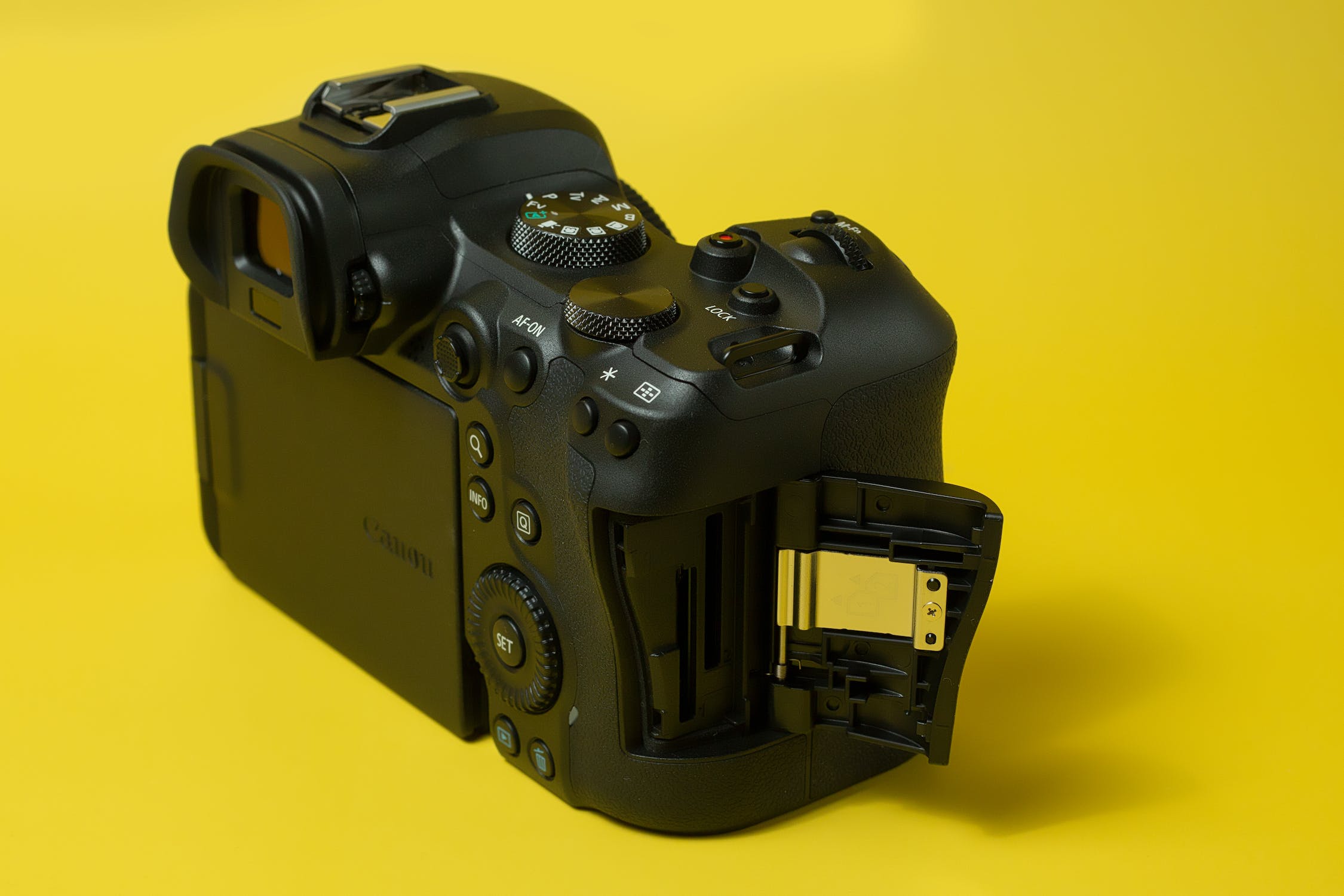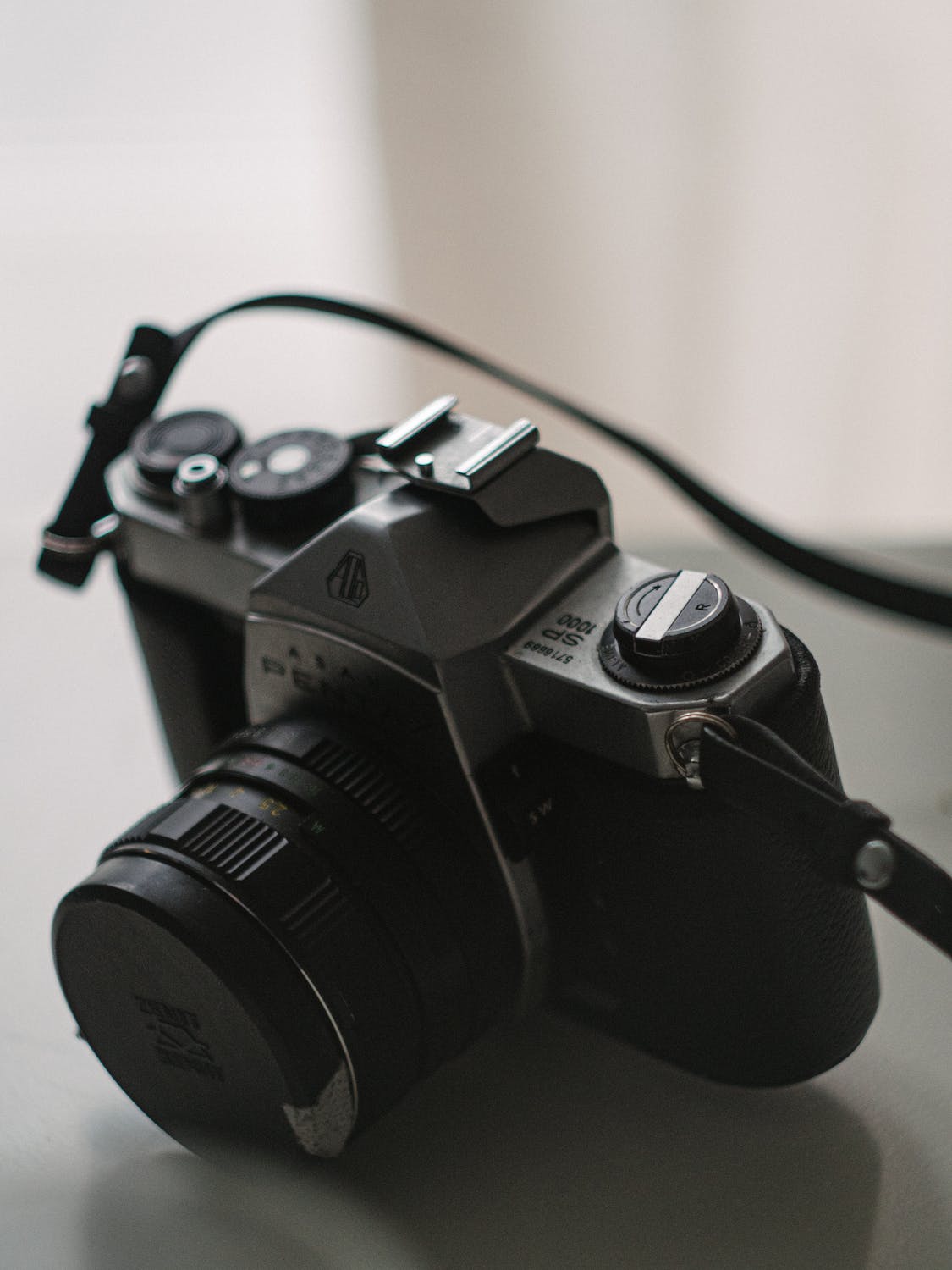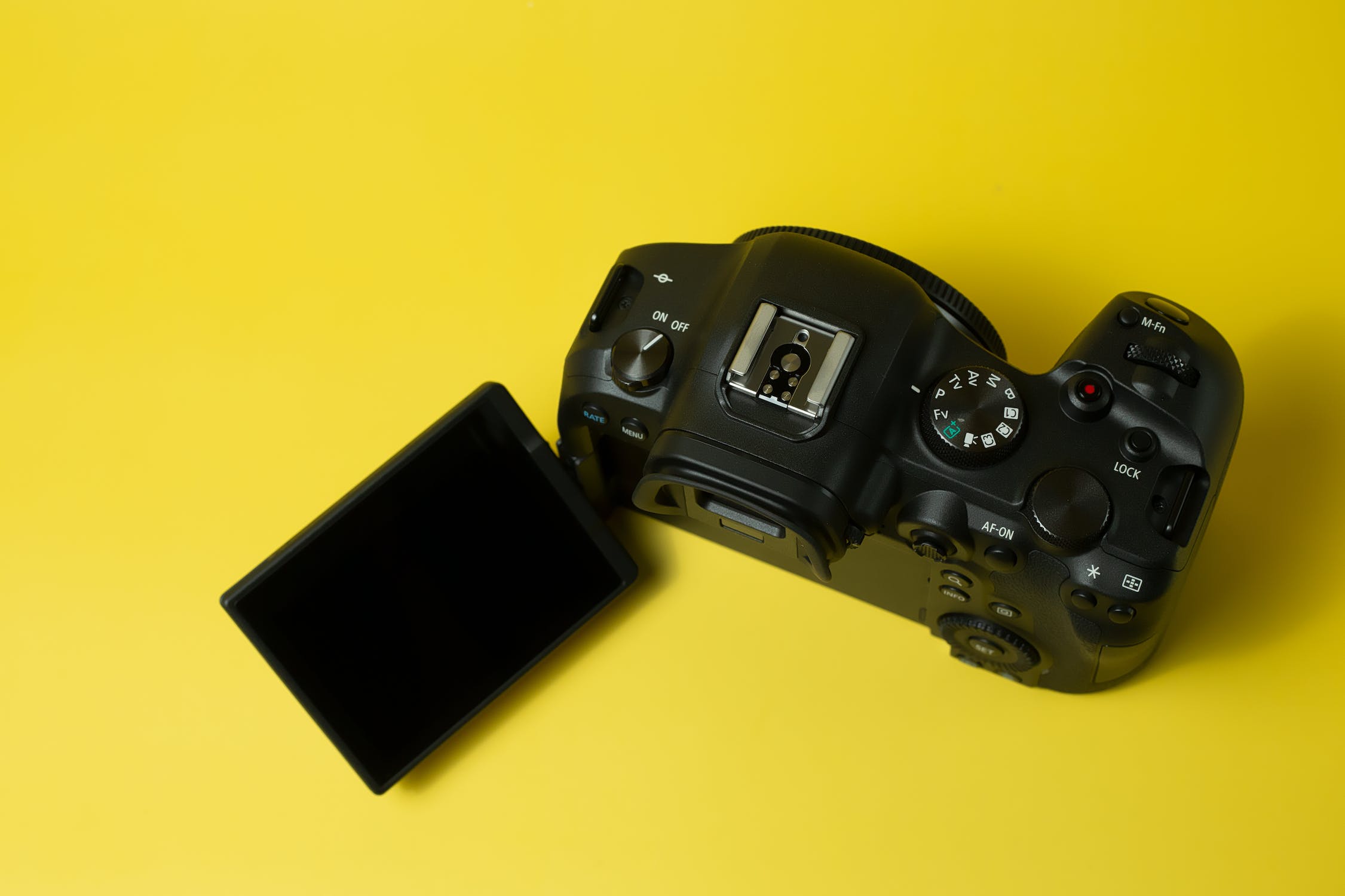With modifications and advancements that paved the way for more mirrorless lenses, mirrorless camera are now the forefront of customizable photography.
A Mirrorless camera works without a reflex mirror. Light passes through the lens directly to the digital sensor, which then displays your image on the camera’s LCD screen, allowing you to adjust settings and preview your image before its shot.
The mirrorless system is more straightforward. Instead of using a mirror to bounce light to the viewfinder and sensor, the sensor is instead directly exposed to light. This generates a live preview of your scene directly to the electronic viewfinder.
When the shutter button is pressed, a door slides up to cover the image sensor. The door will then slide down, exposing the sensor to light. After that, another door slides up to cover the sensor again, which stops exposure, taking the picture.
Mirrorless cameras eliminate the need for a mirror system to direct light from the lens to the viewfinder, by using an electronic viewfinder.
The Benefits of Using a Mirrorless Camera
Compact and Lightweight
One of the most significant benefits of mirrorless cameras is their compact and lightweight design. Without the mirror mechanism, these cameras are generally smaller and lighter. This makes them more potable and comfortable to use during long shoots or when travelling. It also means less fatigue, allowing photographers to focus on capturing stunning images.
Faster and Silent Shooting
Mirrorless cameras are known for their fast and silent shooting capabilities. Without the need for a mirror to move, they can shoot at higher frame rates, allowing photographers to capture action and fast-moving subjects more effectively. The absence of the mirror also means less noise during shooting, which is especially beneficial for wildlife, event, and street photography, where discretion is vital.
Improved Autofocus
Mirrorless cameras have significantly improved autofocus systems compared to their DSL counterparts. With the use of on-sensor phase-detection autofocus, these cameras can focus faster and more accurately, even in low-light situations. This results in sharper images and an over-all better shooting experience for photographers.
Electronic Viewfinder (EVF)
Electronic viewfinders are another advantage of mirrorless cameras. They provide a real-time preview of the image with exposure, white balance, and other settings applied, making it easier for photographers to visualize the final result before pressing the shutter button. EVFs also offer features like focus peaking and zebra stripes, which aid in achieving precise focus and exposure.
Video Capabilities
Mirrorless cameras excel in their video capabilities. They often provide better video quality, higher frame rates, and more advanced features than DSLs. This makes them an excellent choice for photographers who are also interested in videography or want to expand their creative possibilities.
Lens Selection
Although DSLs have a more extensive lens selection, mirrorless cameras are quickly catching up. Many manufacturers are producing high-quality lenses specifically for mirrorless systems, ensuring photographers have access to the best glass for their needs. Additionally, mirrorless cameras can often adapt DSL lenses with the use of adapters, further expanding the available lens options.
Customization Options
Mirrorless cameras offer a high degree of customization options, allowing photographers to tailor their devices to their unique shooting preferences. With customizable buttons, dials, and touchscreens, mirrorless cameras provide quick access to essential settings, resulting in a more efficient and personalized shooting experience.
Battery Life
While mirrorless cameras have historically had shorter battery life compared to DSLs, recent advancements have significantly improved this aspect. Newer mirrorless models offer battery life comparable to that of DSLs, ensuring photographers can shoot all day without worrying about running out of power.
Adaptability
The adaptability of mirrorless cameras is another key advantage. Photographers can use various adapters to attach lenses from different systems, including vintage lenses or those designed for DSLs. This adaptability allows for creative experimentation and increased versatility in a photographer’s kit.
Continuous Shooting
Mirrorless cameras excel at continuous shooting, with some models capable of shooting at speeds up to 20 frames per second (fps) or more. This high-speed performance is particularly useful for sports, wildlife, and action photography, where capturing the perfect moment is crucial.
Future of Photography
The rapid development of mirrorless camera technology indicates that they are the future of photography. With manufacturers focusing on this market segment, we can expect more innovations and advancements in the coming years, further solidifying the benefits of mirrorless cameras for photographers.
The Advantages of Mirrorless Cameras
Significantly Easier Manual Focus
In a mirrorless camera, manual focus is far more accurate because the photographer can use focus peaking and focus point magnification to easily see exactly what is and is not in focus.
Weight
Contrary to what you may think, the difference in weight in a mirrorless and other type of camera is usually quite small.
However, every gram counts especially when travelling.
Zebra Stripes & Live Histogram
Zebra is a camera feature that puts white animated stripes, hence the name, on areas of a photo that are overexposed.
On the other hand, the histogram is simply a graph showing you how much of the scene is completely black, how much each brightness level is moving all the way up, and what is completely white.
Having a live histogram showing up right in the viewfinder is a huge benefit, every time you take pictures with mirrorless camera.
Preview of the Image for Night Photography
With a mirrorless camera, you get the advantage of the ISO of the camera to boost the light output of the scene right in the viewfinder.
With a mirrorless camera doing night photography, you can easily see and set up the composition in seconds.
Low Light Focusing
Mirrorless cameras are often able to focus for night photography.
Size
A mirrorless camera is smaller, but it still doesn’t fit in a pocket by any means.
If it doesn’t fit in a pocket, you have to hold it whether it’s large or small.
Despite that, the size does make a difference in packing for travel photography.
It’s nice to have smaller gear that fits more easily in a carry-on size pack.
However, remember that if you switch to mirrorless but still use a mirrorless with a large full-frame sensor, your size savings will be very minimal.
The real difference is if you take advantage of the system switch to choose a smaller sensor camera (APS-C is the perfect sensor size for my style of photography).
High Burst Rate Without Blackout
The burst rates available in many mirrorless cameras available today are commendable
Another benefit of shooting a burst on a mirrorless camera is that generally, the autofocus does better between frames because the mirror isn’t required to find focus.
Also, there is no blackout when shooting a burst on some mirrorless cameras.
Video Autofocus
Generally, the autofocus for video on a mirrorless camera is far superior, since the mirror need not to be flipped to record video.
You have to give a point for mirrorless for autofocus during video, but it also depends on the specific camera.
Flying Under the Radar
Because mirrorless cameras don’t look huge and professional to the untrained eye, one can get shots in some situations where one wouldn’t be able to otherwise. For example:
- At youth sports events,
- Locations when traveling where pro cameras are banned or require a special permit.
Again, this benefit is mostly negated if you shoot a full-frame mirrorless and are using a long lens.
But if you’re shooting a short lens or an APS-C or micro 4/3 sensor camera, you’ll get away with a lot!
Facial Recognition
Facial recognition to be a promising new technology.
Most serious photographers are still manually choosing focus points, but the promise of what facial recognition could do is really encouraging.
Another benefit of facial recognition is that it can be helpful for auto white balance.
Auto balance recognizes colors and seeks to balance them out, but it doesn’t really know what the scene is.
However, if the camera can recognize a face, it knows approximately the color balance a face should be and is able to more accurately determine the white balance.
More Autofocus Points and Better Spread
One of the biggest benefits of a mirrorless camera.
Most mirrorless cameras offer a high number of focus points, and the focus points are far more spread across the entire frame.
Quieter
Mirrorless cameras are not silent, but they are significantly quieter.
When the quiet modes are engaged on some cameras like the, they can be nearly silent.
This is a really nice benefit for photographing events such as a wedding ceremony, a black-tie event, etc.
Focus Distance in the Viewfinder
This is a nice little benefit when shooting night photography. On many mirrorless cameras, you can show how far your lens is focused from you, right in the viewfinder.
This is helpful when doing night photography to know when you’re focused out to infinity.
Adapting Lenses from Other Systems
The native lens systems for mirrorless cameras are behind in terms of total quantity.
However, the lenses being released for most mirrorless cameras are exceptional since they are using the latest technology and newest lens designs.
But when you can’t find the lens you want, you can always adapt a lens from another system.
Adapters are not a panacea as they bring drawbacks as well, but they can be very helpful.
Preview of Effects
In a mirrorless camera, you can set your picture style to black and white so you preview the image while shooting the same way it will look when finished.
However, you still record your images in RAW still.
So you get a preview of the black and white, AND the flexibility to change things in editing.
Future-Proofing
It is predicted that all major new cameras will be mirrorless.
Currently, there are still some benefits to having a DSLR with a mirror, but those benefits are being eroded away with each release of new mirrorless cameras.
In conclusion, mirrorless cameras offer photographers numerous benefits, including a compact and lightweight design, fast and silent shooting, improved autofocus, and superior video capabilities.
Their adaptability, customization options, and continuous shooting capabilities make them an excellent choice for photographers of all levels. As technology continues to advance, mirrorless cameras are shaping the future of photography and providing photographers with powerful tools to create stunning images.



